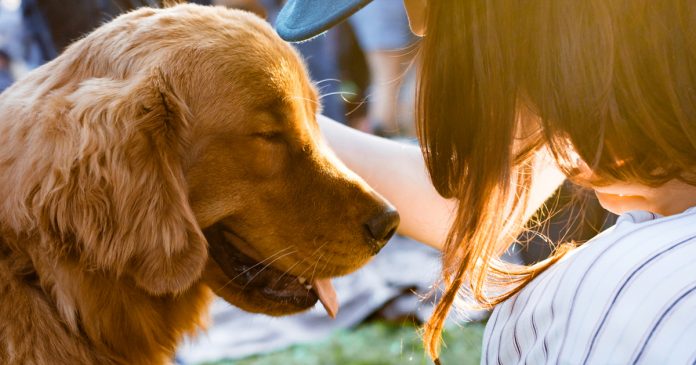This article is written by Yash Kapadia. This article is a brief guide on how one must act upon witnessing a scenario of animal cruelty in India.
Table of Contents
History of animal cruelty and its laws
It is public knowledge across the globe that various animals are worshipped in India. However, despite this fact, our diverse culture also includes cruelty towards these innocent creatures. Animals in India are used for various purposes, including husbandry, agriculture and even transportation in various remote villages. For instance, ironically, although cows in India are considered holy they are frequently used for transportation in metro cities like Mumbai. However, on the good side, the Constitution of India along with various central and state legislations have placed laws for the welfare of wildlife in India.
History of laws
It is a fundamental duty in the Indian Constitution to protect the wildlife around us. This is further complemented by the Directive Principle of State Policy wherein it is stated that an endeavour must be made to protect our environment and the forest and wildlife under Article 48A. There exists several animal welfare legislations in India namely, The Prevention of Cruelty to Animals Act, 1960 and the Wildlife Protection Act, 1972 at the Central level and various legislations at state levels.
The Indian Penal Code, 1860 (IPC) under Section 428 and 429 state the punishment of cruelty such as “killing, poisoning, maiming or rendering useless of animals”. The aforementioned laws have been put in place so that the pain and suffering of animals can be diminished and similar legislations continue to be put into force according to the changing circumstances.
Important Legislations with relevant sections
The Prevention of Cruelty to Animals Act, 1960
The primary cruelty law of India is in the form of The Prevention of Cruelty to Animals Act, 1960. The objective of this Act is “to prevent the infliction of any type or sort of unnecessary pain or suffering on animals and to change the laws relating to the prevention of cruelty to animals.” The Act defines “animal” as “any living creature other than a human being”. This Act was a major transition towards recognising strays and making laws for the protection of stray animals.
The Act provides us with a scope of when an animal is meant to be treated cruelly under Section 11. In this Section, cruelty in scenarios of employing an animal, confining an animal, sale, etc are enlisted. Animals herein include strays and pets. It is pertinent to note that on the first conviction, treating animals cruelly is punishable with a fine of Rs. 10, extendable up to Rs. 50. On a second or subsequent offence, if committed within three years of the previous one, he is to be punished with a fine of Rs. 25, extendable up to Rs. 100 or with imprisonment which could extend up to 3 months or both. Performing various operations to improve lactation of an animal that is injurious to its health is also punishable with a fine of Rs. 1000 or imprisonment up to 2 years or both.
The Wildlife Protection Act, 1972
The Wildlife Protection Act, 1972 is a much better version of the Prevention of Cruelty to Animals Act, 1960. According to Section 2(37) of the Act, “wildlife” includes any animal, living on land or water or in vegetation that forms part of any habitat. Therefore, the definition of ‘wildlife’ has been broadened by this Act.
Section 9 of this Act prohibits the hunting of any wild animal that is stated in Schedule 1, 2, 3 and 4 and punishes such an offence with imprisonment for a term which may extend to a period of 3 years or with a fine which may extend to Rs. 25,000/-, or with both.
What to do if you witness animal abuse?
Now that our readers are well equipped with the laws that go hand in hand concerning animal cruelty, we shall now move ahead to the approach one must take if one sees/ experiences an instance of animal cruelty in any form. This may include starvation, confinement, beating, experimentation or any sort of animal testing.
Compose yourself
At the outset, when a person’s attention is drawn towards any sort of animal cruelty happening, one must compose the emotional outburst at the very instance. This will lead to everything that follows. A wrong composure and not being able to stay calm will lead to irreparable harm caused to the animal. The first thing one must do is to take the injured animal to a veterinary hospital, and if one is not comfortable doing so, contact an animal care NGO through Google.
Document the crime in any form
If one sees that there is a violation of animal rights, one must either record it on video (which is very prominent nowadays) or take the help of eyewitnesses around. Section 65 of the Indian Evidence Act, 1872 recognises video evidence and states that it is admissible in court. It has already been stated that treating animals with cruelty is an offence punishable under Section 11 of the Prevention of Cruelty to Animals Act, 1960. It is also to be noted that one must make sure he/she does not put themself in danger in the process of gathering evidence.
Send a legal notice
Legal notice can be sent via a lawyer to the animal abuser and if one does not have the means to contact a lawyer, a legal notice can be sent through animal welfare agencies which are sure to help in such scenarios. Many lawyers will indeed help in sending a strong-worded legal notice as pro-bono work from their end. However, if no redressal or action is taken by the person abusing the animal, we move to the next step of filing an official complaint.
Filing of a First Information Report
After gathering evidence, one must immediately take the same to the nearby local police station where the crime was committed and lodge a formal First Information Report (FIR) detailing the entire incident of cruelty towards the animal. The relevant laws to charge the animal abusers have been mentioned above. If for some reason, an FIR is not being registered, one must take this matter to a higher degree officer, i.e., a Superintendent of Police or Deputy Police. Even if this goes in vain, which is highly unlikely, one has the right to file a complaint of animal abuse in a court of law. When it comes to the court, one will need the help of a lawyer or animal welfare groups having lawyers, who can help in such situations.
Or
Lodge a Wildlife Offence Report:
A Wildlife Offence Report can be filed with the police under Section 50(4) of the Wildlife Protection Act, 1972. According to Section 55 of the same Act, the following people can file a complaint to the magistrate:
- “The Director of Wildlife Preservation or any other officer authorized on his behalf, who is authorised by the Central Government, Members of Central Zoo Authority or Member-Secretary of Tiger Conservation Authority, Director of the concerned Tiger Reserve.
- Chief Wildlife Warden
- Any person who has given another person/group notice of at least sixty days, of his intention to make a complaint.”
Arrest by an individual
One must be aware of the fact that Section 43 of the CrPC allows an individual to arrest an offender who commits a non-bailable and cognizable offence or is a habitual offender and hand him/her over to the police. All offences in the Wildlife Protection Act, 1972 are cognizable and non-bailable. Even so, it is always recommended to take assistance from a local NGO or local police officers.
The approach of Indian Courts through dictums
Animal Welfare of India v. A Nagaraja and Ors, (2004)
In this case, the traditional sport of Jalikattu practised in Tamil Nadu as a ritual during the Pongal festival every year was brought under the radar of the Hon’ble Madras High Court, and the validity and constitutionality of this traditional sport/ ritual were challenged. A case was filed before the Hon’ble Supreme Court by the Animal Welfare Board of India seeking a blanket ban on the primaeval traditional sport/ ritual. When the practice of Jallikattu in 2014 was banned by the apex court, it relied on and mentioned various sections of the PCA, 1960, which addresses the unwarranted suffering of animals. Relying on Section 3 and Section 11, the Hon’ble Supreme Court declared that all animal fights incited by humans are illegal including those carried out under the pretext of tradition and culture. It was also held that “Article 51A(g) of the Constitution of India is the Magna Carta of animal rights in India, and also extends the right to life under Article 21 of the constitution, to every living being including animals.”
State of U.P Vs. Mustakeem and Ors, (1999)
The Supreme Court, in this case, stated that in cases of cruelty, the custody of animals should not be given to the accused but to the nearest gaushala or a pinjrapole, until the conclusion of the trial.
Shri. Ajay Madhusudan Marathe Vs. New Sarvodaya CHS Ltd, (2010)
In this case, the State Consumer Redressal Commission rejected the appeal before it and opined that a society cannot prohibit a resident from having pets and utilizing his/her facilities for pets. The pets shall be allowed to use the lifts just as other members of society. This ruling by the consumer commission reiterated that residents cannot be prevented from having pets and those pets shall not be banned from using lifts.
People for Ethical Treatment of Animals v. Union of India, (2004)
The Hon’ble Delhi High Court, in this case, ruled in favour of the Petitioner (PETA) and held that if the makers of a movie want to use an animal in it, they would first have to obtain a certificate from the Animal Welfare Board of India, which contains various provisions of the Performing Animals Registration Rules, 2001. This ruling has prevented animals from being exposed to extremely loud, strange sounds, beaten or kept without food and water on the sets and locations of movies.
Karnail Singh & Ors vs State Of Haryana on 31 May, (2019)
The Hon’ble Punjab and Haryana High Court, in 2019, held animals to be legal persons. This was perhaps a welcoming step in Indian judicial dictums. While delivering the judgment Justice Shri Rajiv Sharma, stated that “All the animals have honour and dignity. Every species[s] has an inherent right to live and is required to be protected by law. The rights and privacy of animals are to be respected and protected from unlawful attacks.” The Hon’ble Judge further declared that “The entire animal kingdom including avian and aquatic are declared as legal entities having a distinct persona with corresponding rights, duties and liabilities of a living person. All the citizens throughout the State of Haryana are hereby declared persons in loco parentis as the human face for the welfare/protection of animals.”
Conclusion
We skimmed through the history of animal cruelty in India and enlisted the necessary legislation that is in place. In addition, we provided a roadmap on how one can approach a situation of animal cruelty, which was followed with landmark case laws in the domain. From what has been stated, it is crystal clear that the judiciary has been recognising the rights of animals and is intolerant towards various forms of animal cruelty. However, the cases of animal cruelty are still in abundant numbers which are to a large extend on account of meagre penalties.
If there are stringent punishments and fines levied on abusers of animals, it would lead to a decline in animal cruelty cases. With the increase in technological media platforms, we have time and again seen viral videos of animals being abused and necessary welfare associations or police taking action against them. It is a good approach that social media is used as a tool to catch the perpetrators but when stringent laws are in place, an abuser would refrain from doing such acts knowing the repercussions he would have to face.
All in all, the shebang of this article was to enlighten every reader on what must be done if an action is to be taken against animal abuse being witnessed by him/her. If every person does his bit to stop animal abuse, we, as well as animals that are part of our natural habitat, would be able to coexist in a beautiful environment.
LawSikho has created a telegram group for exchanging legal knowledge, referrals, and various opportunities. You can click on this link and join:
 Serato DJ Crack 2025Serato DJ PRO Crack
Serato DJ Crack 2025Serato DJ PRO Crack











 Allow notifications
Allow notifications



